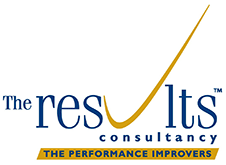 A key skill of a client-focused professional is the ability to spot opportunities to further support a client – or target client – and then gain the decision-maker’s commitment to work with them.
A key skill of a client-focused professional is the ability to spot opportunities to further support a client – or target client – and then gain the decision-maker’s commitment to work with them.
In this article we focus on some of the skills for spotting new work opportunities in your client base. We have also shared techniques to help you convert those opportunities into business, without the need for you to come across as ‘pushy’ or ‘needy’.
Spot opportunities by getting close to your client
Understand your client’s business and the sector it operates in. Whilst it sounds like a cliché, it is very difficult to spot opportunities to help a client if you don’t understand the drivers of their sector and how their business operates.
Spotting opportunities here means getting really close to your client to understand where they are trying to take the business – their vision, strategies and goals. It also means familiarising yourself with the challenges they face at the moment, and the priorities for those in charge of areas where you can advise. Basically, the closer you are to your client, the easier it is to spot opportunities where you and others can help.
Use client and contact news as a trigger
Google alerts, FT.com, the sector press, LinkedIn and a variety of other business intelligence media give valuable insight into what is going on with the sector and your client. They can alert you to useful ‘triggers’ for contacting clients to offer timely support.
Effective professionals are ‘quick off the mark’ in responding to such news in a way that is valuable to their contacts. They are most likely to be seen as commercial ‘trusted advisers’ in comparison with their less proactive competitor counterparts – and new work stems from such interactions.
Use the power of questions
Often the client or contact may not recognise that they have a problem – or an opportunity – that is worth addressing. The successful professional recognises the power of questioning and listening to uncover priorities that may need support.
Asking open and probing questions is the key to uncovering what we call the ‘light bulb moment’. This is when the contact is talking about a topic and it becomes clear that support from either you or others is required.
Gaining client commitment to the next step
Finally, when exploring a new business opportunity with a client there is no need for fancy sales ‘closing’ techniques in the vast majority of client/ professional discussions. However, the ability to…
- articulate suggested approaches to the client
- give a personal point of view on the benefits and implications of taking action and
- provide a ‘route map’ of what should happen next
…are all crucial skills when gaining a contact’s commitment to move forward.
The bulk of the work in gaining commitment is done through these three elements:
- Demonstrating your understanding of the client’s issues
- Making a thoughtful proposition on how you and others can help
- Creating a dialogue on appropriate next steps
You also should be prepared with answers to the voiced or unvoiced questions likely to be going through a client contact’s mind. Questions such as:
- Why should we do this now?
- What benefits will we get out of the work?
- Why are you better placed than others to do it?
- How much is this going to cost?
- What are the potential downsides, and the risks?
- What are the resource implications?
Those professionals who are adept at spotting opportunities and converting them into new work are always prepared to address these points in the conversation.
Can we help?
We host practical Business Development workshops, coaching, webinars and e-learning to help busy senior professionals develop new work opportunities in business discussions. If you would like more information on these, get in touch on t: 44 (0) 20 7488 4419 or email results@winningbusiness.net.


